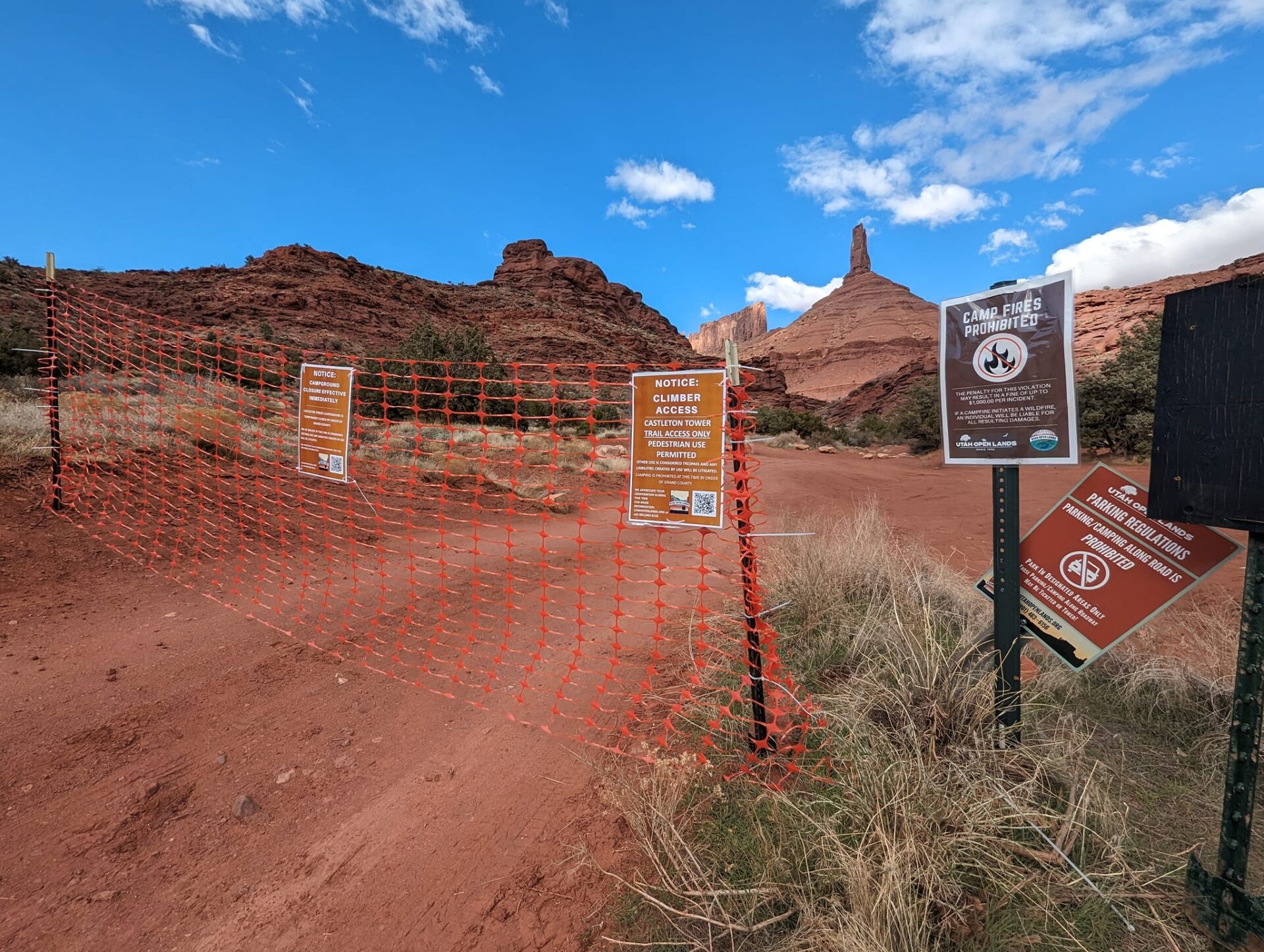In a scene far more likely to take place in Florida than the arid desert of southeastern Utah, a sinkhole recently appeared beneath a home in the Mountain View subdivision, displacing a local family and causing the home to be condemned.
Lifelong Moab resident Phillip Mosher was enjoying a Sunday afternoon on the flagstone patio of his Doc Allen Drive home when the leg of his chair suddenly disappeared into the ground.
“I picked up the chair to look down into the hole and it just kept going,” Mosher said. “I’ve never seen anything like this in Utah.”
Mosher, who serves as the Grand County Fire Department chief, said that he called city and county inspectors on Monday, Sept. 14, to assess the situation. It was quickly determined that his family of five needed to vacate the premises, he said.
“Usually, I’m the one who comes to look at these things, but because it’s my house, I needed to have someone else look at it,” he said. “But this is what we would do under any circumstance; no one can live there.”
The hole that first appeared as a small opening along the back wall of his house was soon determined to be between 12 and 16 feet wide, and from 4 to 12 feet deep, extending back underneath the home, according to Grand County Building Inspector Bill Hulse.
Hulse, who climbed down into the hole, said he was “a little leery at first,” but that once he got down inside, “it seemed pretty solid.”
At this point, Hulse said that it’s speculation to say what caused the sinkhole. But several theories are being considered, he said, including the possibility that buried rockfall from the Moab Rim created a void for sand to slip through, or that the sinkhole could be linked to the presence of volatile or collapsible soils.
“There is some gypsiferous soil under there that could have formed a dome and collapsed,” he said. “But we didn’t see any signs of water under there.”
Ultimately, Hulse said, it would take the work of geo-engineers to determine what caused the sinkhole and if anything could be done about it.
Sinkholes typically occur naturally as a result of percolating water and the gradual removal of soluble bedrock. This process creates a void that ultimately results in a collapse of the overlying cave roof. Though most often occurring in regions with heavy limestone deposits, sinkholes also appear in areas of chalk, gypsum, basalt, and where there are underlying salt beds.
Human activities such as mining, groundwater over-extraction, drainage diversion and failing infrastructure – such as water main leaks, or the collapse of sewer systems and other buried pipes – can also create sinkholes.
Moab City Public Works Director Jeff Foster said there have been some cases where old, galvanized irrigation pipes have rusted out and created small sinkholes in town. But that doesn’t appear to be the cause in this case, he said.
“We’ve gone through our system and can’t find anything that may have caused this,” Foster said.
Mosher said he remembered that when he was a kid, there were salt ponds left over from a brine well behind where his current house sits. Water and brine were withdrawn for use on oil and gas wells, and to put on roads for dust control, until the well eventually went dry.
Foster said that the brine well could potentially be a cause for the sinkhole, but that it would take a more detailed investigation to confirm whether or not that’s the case. He concurred with Hulse, and said that until geological tests were done, the cause of the hole, and ultimately what could be done about it, remain a mystery.
“They need to find out if what’s in the bottom of the hole is stable, then it can be filled with something that can stabilize the house,” Foster said.
In response to neighbors’ concerns, Foster said that he and county inspectors looked at other homes to see if they were at risk. He said they observed that a slab of concrete had settled on the southwest corner of Huntridge and Doc Allen. But they didn’t see any other implications, he said.
“You have that sort of thing all around Moab,” he said.
Hulse said that from his analysis, the concrete under Mosher’s house looks stable.
“I don’t think the foundation and slab are going to go anywhere,” he said.
But for now, Mosher and his family have had to find somewhere else to live.
Mosher said that homeowners insurance doesn’t cover sinkholes anywhere in the country beyond Florida. As a result, he is responsible for funding the geo-technical work, as well as any stabilization and reconstruction work that needs to be done.
He said he is thankful that he has plenty of family in the area, and that all they can do now is wait to hear what the tests determine.
“This is just one of those unfortunate things that happens,” he said.
Home condemned after 12-foot cavern appears
I picked up the chair to look down into the hole and it just kept going … I’ve never seen anything like this in Utah.




